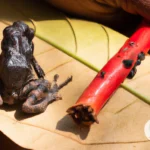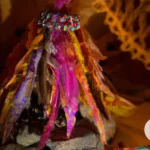The Amazonian shamanic traditions utilize a plethora of plant medicines for healing and spiritual purposes. These remedies have been in use for centuries, and their popularity has only grown in recent years. Each plant medicine has unique properties and effects, making them valuable tools for those seeking physical and emotional healing and growth. In this article, we will explore some of the most common plant medicines used in Amazonian shamanic traditions, including Ayahuasca, Tobacco, Sananga, Chiric Sanango, Bobinsana, Rapé, and Kambo. We’ll delve into their origins, traditional uses, potential benefits and risks, and the experiences they can offer to those who seek their wisdom.
Ayahuasca
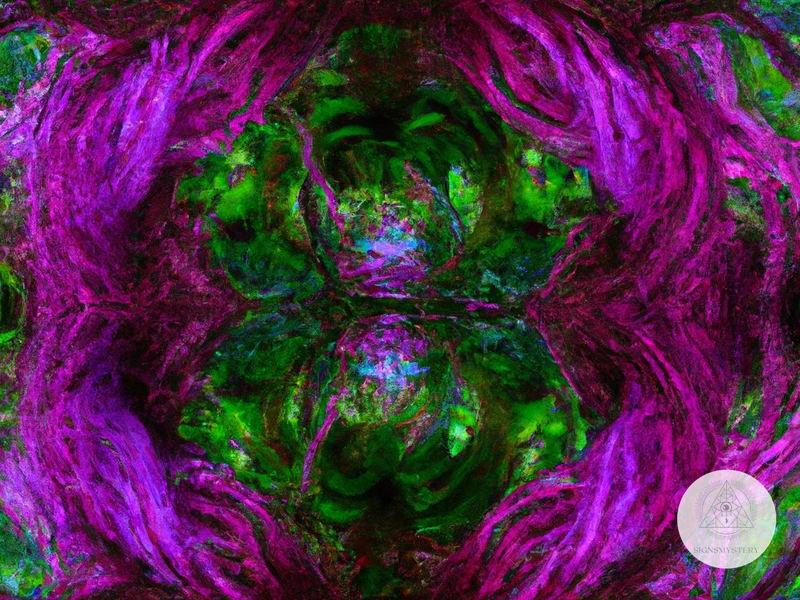
Ayahuasca is a powerful plant medicine used in Amazonian shamanic traditions for centuries. It is a brew made from the ayahuasca vine and the leaves of the chacruna plant. The active ingredient in ayahuasca is DMT, which normally gets broken down by enzymes in our stomach before it can produce any effects. However, the ayahuasca vine contains MAO inhibitors that block those enzymes and allow the DMT to become active. Ayahuasca is often used in healing ceremonies to promote self-reflection, spiritual growth, and connection to nature. It is also used in many shamanic traditions as a tool for divination and communication with spirits. However, ayahuasca also carries potential risks, both physical and psychological, and should be approached with caution. To learn more about the safe and responsible use of ayahuasca, check out our article on “/ayahuasca-healing-shamanic/”.
What is Ayahuasca?
Ayahuasca is a powerful entheogenic brew made from the Banisteriopsis caapi vine and other plant materials found in the Amazon rainforest. This potent psychedelic has been used for centuries by indigenous people of the Amazon region for spiritual, medicinal, and cultural practices. The word “Ayahuasca” comes from two Quechuan words, “aya” meaning soul or dead, and “huasca” meaning vine or rope, which translates as the “vine of the soul” or “vine of the dead.”
Ayahuasca contains the psychoactive compound dimethyltryptamine (DMT) and a monoamine oxidase inhibitor (MAOI) that allows DMT, which is usually broken down by enzymes in the stomach, to be absorbed and deliver its psychoactive effects when ingested. Ayahuasca is known for inducing visions, intense emotions, and a profound altered state of consciousness, often described as a “journey” or “trip.”
In traditional shamanic practices, Ayahuasca is consumed in a ceremonial context after following specific preparation and guidelines. The experience is guided by an experienced shaman, who is referred to as an Ayahuasquero or Curandero, who sings traditional songs called “icaros” to facilitate the healing and spiritual journey.
Though Ayahuasca is gaining popularity in the Western world and some studies show its potential therapeutic benefits, there are also potential risks and complications to consider, including physical and psychological effects. It is essential to understand the preparation, dosage, and potential dangers before any attempt at consumption. Meanwhile, it is also significant to take issues of ethics and sustainability in the use of Ayahuasca, considering that it has been extensively commercialized and the demand has led to environmental damages and indigenous cultural exploitation, among other issues. DMT, another powerful psychoactive substance that can be found in certain plants, also has some similar effects to Ayahuasca, and it’s worth learning about it.
How is Ayahuasca Used in Shamanic Traditions?
Ayahuasca has been used in shamanic traditions for centuries as a tool for healing, spiritual growth, and connecting with the divine. The consumption of ayahuasca usually takes place in a ritualistic setting called an ayahuasca ceremony, led by a shaman or curandero. During the ceremony, participants drink a brew made from the ayahuasca vine and other plant ingredients such as chacruna or chagropanga.
Ayahuasca ceremonies are often accompanied by traditional songs called icaros, which the shaman uses to channel spiritual energies and guide participants on their journey. The effects of ayahuasca can last for several hours, and participants may experience intense visual and auditory hallucinations, emotional processing, and physical purging.
In shamanic tradition, ayahuasca is believed to have a spiritual intelligence or consciousness, which can offer guidance and healing to those who consume it. It is often used for exploring one’s personal spiritual truth, connecting with ancestors or spirits, and gaining insight into the nature of reality.
Participants in an ayahuasca ceremony are often advised to follow specific dietary and behavioral restrictions before and after the ceremony. This is to promote physical and emotional safety, as well as to honor the spirits of the plant and the ceremony itself. Some of these restrictions may include avoiding certain foods and beverages, sexual activity, and exposure to negative energies.
Overall, ayahuasca is considered a powerful and sacred plant medicine in shamanic traditions, and its use requires respect, preparation, and intentionality. While it can offer transformative healing experiences, it is important to approach it with caution and under the guidance of an experienced shaman or facilitator.
Plant medicines such as ayahuasca are becoming increasingly popular for their potential to address mental health and addiction issues. However, it is important to note that these plants should not be used as a substitute for professional medical treatment, and should only be consumed in a safe and responsible setting.
What are the Potential Benefits and Risks of Ayahuasca?
Potential Benefits:
- Ayahuasca is believed to have therapeutic potential in treating depression, anxiety, and addiction.
- It is also used as a tool for self-discovery and spiritual growth.
- Some individuals report feelings of profound connection with nature, the universe, and a higher power after consuming Ayahuasca.
- Ayahuasca also has anti-inflammatory properties and is being studied for its potential to treat certain illnesses such as Parkinson’s disease and cancer.
Potential Risks:
- Consuming Ayahuasca can cause intense physical and psychological effects including vomiting, diarrhea, paranoia, and hallucinations.
- It should only be consumed under the guidance of a trained shaman, as improper preparation or dosage can lead to serious health complications or even death.
- Ayahuasca can also have negative effects on individuals with a history of mental illness or certain physical health conditions, and can interact negatively with certain medications such as antidepressants.
- There are also concerns about the environmental impact of the increasing demand for Ayahuasca, and the exploitation of indigenous communities in its production and sale.
While Ayahuasca can have potential benefits in certain contexts, it is important to approach its consumption with caution and respect for its power and potential risks. Individuals considering Ayahuasca as a form of treatment or spiritual practice should carefully research the process, seek out a reliable shaman or retreat center, and consider any potential health or ethical implications. Those interested in exploring alternative plant medicines for healing or spiritual growth may also want to look into other options such as San Pedro cactus, psilocybin mushrooms, peyote, or cannabis.
Tobacco
Tobacco is a powerful plant medicine extensively used in Amazonian shamanic traditions. It is often used in the form of mapacho, a type of tobacco that is sun-dried and cured with herbs. Tobacco is utilized for its psychoactive properties, as well as for its protective qualities and ability to act as a purgative. When consumed, tobacco can induce a state of heightened awareness and altered consciousness. Tobacco is often used in conjunction with other plant medicines, such as ayahuasca, for a more profound spiritual experience. However, it is essential to note that tobacco is not without risks and should be consumed with caution. Despite its potential dangers, tobacco remains a crucial tool in the shaman’s arsenal for healing and spiritual growth. If you would like to know more about the role of plant medicines in shamanic traditions, check out this article on Tobacco Shamanism.
What is Tobacco?
Tobacco is a plant that belongs to the nightshade family, also known as Nicotiana Tabacum. While it is commonly known for its use in cigarettes, it has been used in shamanic traditions for centuries, especially in South America. Shamans often refer to tobacco as a “master plant” because of its intense energy and transformative qualities.
Tobacco is considered sacred in many indigenous cultures and is believed to bridge the physical and spiritual realms. But unlike the nicotine found in cigarettes, the species of tobacco used in shamanic rituals is not addictive.
Indigenous tribes use tobacco in various ways, including burning it as incense, smoking it in pipes, and using it in snuff or rapé. Tobacco snuff, for example, is a powdered form of tobacco mixed with other plants and herbs that is blown into the nose through a pipe. This is believed to have medicinal properties and can induce visions, protect against negative energies, and clear the sinuses.
It is important to know that the use of tobacco in shamanic traditions is very different from smoking cigarettes. In shamanic practices, tobacco is used with respect and intention and used as a tool to connect with the spiritual world. Because of its potency, it is important to use it with care and under the guidance of an experienced shaman.
While the use of tobacco in shamanic rituals has its benefits, it also has potential risks. Misuse and abuse of tobacco can lead to addiction, respiratory problems, and other health issues. It is crucial to approach its use with reverence and caution.
Click here to read more about the pros and cons of cannabis shamanism.
How is Tobacco Used in Shamanic Traditions?
Tobacco Usage in Shamanic Traditions
Tobacco is a sacred plant in Amazonian shamanic traditions and is considered to be one of the most important plant medicines. Shamans believe that tobacco has the power to connect individuals with the spirit world, increase their spiritual strength, and bring balance to their minds and bodies.
There are several ways in which shamans use tobacco in their practices. One of the most common ways is to smoke it in a pipe or cigar. The smoke is believed to carry the prayers and intentions of the shaman to the spirit world. It is also used to clear negative energies and create a protective shield. To perform the ceremony of smoking tobacco, the shaman may call upon the spirits and invite them to participate in the ritual.
Another way shamans use tobacco is by preparing it as a snuff. The snuff is made by grinding the tobacco leaves into a fine powder and mixing it with other plants. The shaman then blows the snuff into the participant’s nostrils using a special pipe. The effects of the snuff are almost instantaneous, and individuals often experience a heightened sense of awareness and a feeling of connection to the spirit world. Tobacco snuff is also believed to have healing properties and is often used to treat ailments such as headaches and colds.
In some shamanic traditions, tobacco is also used as a purgative. The shaman prepares a strong tobacco tea, and the participant drinks it to induce vomiting. This is believed to cleanse the body of negative energies and toxins and bring about spiritual healing.
It is important to note that the use of tobacco in shamanic traditions is not the same as smoking cigarettes, which is harmful to health. Tobacco in its pure form is used with great respect and in a ritual context. It should only be used under the guidance of an experienced shaman who understands the proper way to perform the ceremony.
Tobacco is a powerful and sacred plant medicine in Amazonian shamanic traditions. Its usage should be treated with great respect and only conducted under the guidance of experienced shamen. Use of tobacco in this context can create a deeper spiritual connection and lead to spiritual healing.
What are the Potential Benefits and Risks of Tobacco?
Potential Benefits of Tobacco in Shamanic Traditions
Tobacco, a plant native to the Americas, is often used in Amazonian shamanic traditions for its potential psychoactive effects. In shamanic ceremonies, tobacco is either ingested or smoked. When smoked, it can produce a stimulant effect, leading to heightened senses and increased awareness. When ingested, it can produce a calming effect, aiding in relaxation and focus.
Tobacco is also used as a tool for cleansing and purifying. In some shamanic practices, participants blow tobacco smoke over the body to rid it of negative energy. Additionally, tobacco is believed to have the ability to help connect individuals to their inner selves and to the spirit world.
Potential Risks of Tobacco in Shamanic Traditions
While tobacco can have potential benefits in shamanic traditions, it is important to recognize the potential risks as well. As smoking tobacco can have harmful effects on both the lungs and heart, excessive intake of tobacco can lead to a range of health problems. Additionally, while tobacco is often used for its psychoactive properties in shamanic ceremonies, excessive use can lead to addiction and dependence.
To minimize the risks, it is important to ensure that traditional tobacco use is done in a safe and guided environment with an experienced shaman. Those with a history of heart or lung issues should avoid using tobacco altogether.
While tobacco use in shamanic traditions can have potential benefits such as heightened awareness, stress relief and purification, it is important to recognize and minimize the potential risks. As with any plant medicine, it is crucial to respect the plant, the ceremony and to ensure ethical and sustainable practices are followed at all times.
Sananga
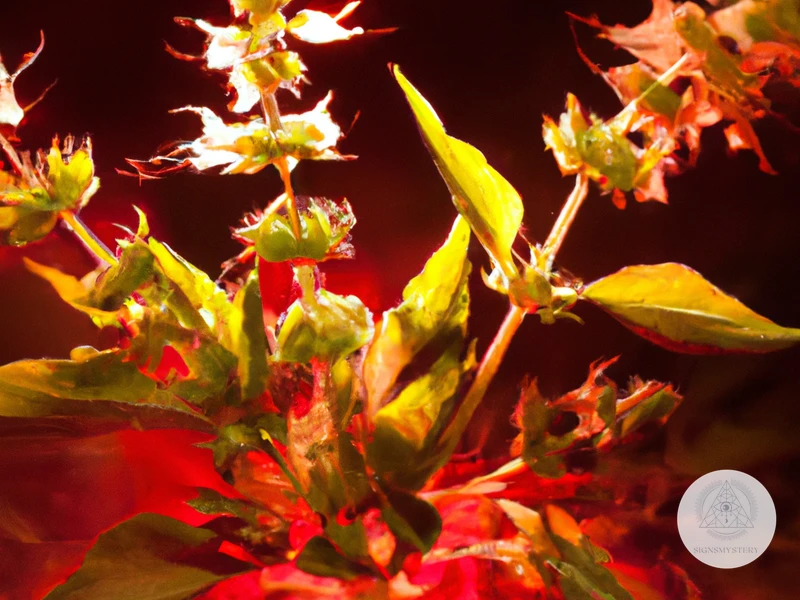
is a powerful Amazonian plant medicine used in shamanic traditions for its healing and spiritual properties. It comes from the roots and bark of a shrub found in the Amazon rainforest and is known for its strong medicinal properties, particularly in treating eye problems and providing mental clarity. In shamanic ceremonies, the liquid extract of Sananga is often dripped directly into the eyes, causing intense burning and temporary blindness, followed by an intense emotional release and feeling of clarity. It is important to note that Sananga should only be used under the guidance of an experienced shaman and with proper preparation and care.
What is Sananga?
Sananga is a powerful plant medicine used in Amazonian shamanic traditions that comes from the root and bark of the Tabernaemontana undulata plant. The plant is native to the Amazon rainforest and has been used for centuries by indigenous people for its medicinal properties. Sananga is typically administered as eye drops and is believed to have a range of benefits for both physical and spiritual healing.
Sananga has been used by indigenous tribes in the Amazon for a variety of purposes, including to enhance spiritual clarity, improve vision, and treat a variety of physical ailments such as headaches, fever, and infections. The eye drops are made by crushing the plant’s roots and bark and soaking them in water. The resulting liquid is then strained and used as eye drops.
Sananga is known for its intense and often painful effects. When administered, the drops can cause a burning and stinging sensation that typically lasts for a few minutes. This is thought to be a purifying process that helps to clear energy blockages and release negative emotions. In addition to its physical effects, Sananga is also believed to have powerful spiritual properties and is often used in ceremonial contexts.
It is important to note that Sananga should only be administered by a trained shaman or experienced practitioner who is familiar with the plant and its effects. Incorrectly prepared or administered Sananga can cause serious harm and should be avoided. It is also important to ensure that Sananga is ethically and sustainably sourced to avoid contributing to the exploitation of the Amazon rainforest and its indigenous people.
In conclusion, Sananga is a powerful plant medicine with a long history of use in Amazonian shamanic traditions. Its physical and spiritual benefits make it a popular choice for those seeking healing, purification, and spiritual clarity. However, its intense effects and potential risks make it important to only use Sananga under the guidance of a trained practitioner. It is important to approach the use of Sananga with respect and responsibility, and to ensure that it is ethically and sustainably sourced to protect both the plant and the people who rely on it for their livelihoods.
How is Sananga Used in Shamanic Traditions?
Sananga is a plant medicine that is used in a variety of ways by Amazonian shamans. One of the most common ways that Sananga is used is as eye drops. The shamans carefully apply the drops directly into their own or their patient’s eyes, with the belief that the medicine can help to improve vision and other eye-related problems. The preparation of Sananga drops is an intricate process that involves boiling the root in water, then filtering and diluting the resulting liquid to create a potent concentrate.
Another way that Sananga is used in shamanic traditions is during ceremony. The smoke from the burning Sananga root bark is said to be cleansing and protective in nature. Shamans often use this smoke to help clear the energy in a ceremonial space, and to protect themselves and their patients from negative energies. They may also carry a piece of the root with them as a talisman or amulet.
Sananga is also used in combination with other plant medicines. For example, it may be used in conjunction with Ayahuasca to help intensify visionary experiences. It can also be used alongside other purgatives such as Kambo, to help prepare the body for the purging process.
It is important to note that the use of Sananga, like all plant medicines, should only be done under the guidance of an experienced shaman. Sananga is a potent medicine, and it is important to understand the proper preparation and dosage before use. Additionally, it is essential to ensure that the Sananga being used is sustainably harvested and the practice is done ethically.
If you are interested in learning more about plant medicines and shamanism, it is important to educate yourself on the safe and ethical use of these powerful tools. You could also read our article on Ethics and Sustainability of Plant Medicines in Shamanism to further your knowledge.
What are the Potential Benefits and Risks of Sananga?
Potential Benefits of Sananga
Sananga is believed to have a range of potential benefits for those who use it. The most commonly cited benefits include **pain relief**, **improved vision**, **headache relief**, **migraine relief**, and **anti-inflammatory** effects. Sananga is also believed to work as a **cleansing agent**, helping to remove toxins from the body. It has been used for centuries in traditional Amazonian medicine, and more recently, has gained popularity in the West as a natural form of medicine.
In addition to its physical benefits, some users of Sananga have reported spiritual experiences, including enhanced meditation and deeper forms of connection with the natural world.
Potential Risks of Sananga
While Sananga is generally considered to be safe, there are a few potential risks associated with its use. The most common side effect is **temporary eye irritation**, which can lead to redness, tearing, and discomfort. There is also a risk of **infection** if the Sananga is not prepared and applied in a sterile environment. In rare cases, some individuals may experience an **allergic reaction** to the plant.
As with any form of traditional medicine, it is important to proceed with caution and to consult with a qualified practitioner before using Sananga. Individuals with pre-existing medical conditions, such as **glaucoma** or **eye infections**, should avoid using Sananga. Pregnant or nursing women should also avoid using Sananga, as the effects of the plant on developing fetuses and infants are currently unknown.
Conclusion
Sananga appears to have a range of potential benefits for those who use it, including pain relief, improved vision, and anti-inflammatory effects. However, it is important to note that there are also potential risks associated with its use. As with any form of traditional medicine, it is essential to consult with a qualified practitioner before using Sananga, and to proceed with caution to minimize the risk of side effects.
Chiric Sanango
Chiric Sanango is a powerful plant medicine used by Amazonian shamans for spiritual and physical healing. It is known for its stimulating effect on the nervous system and is used to treat a variety of ailments such as rheumatism, arthritis, and snake bites. Chiric Sanango is believed to have a spirit that works alongside the shaman to help heal the patient. The preparation and consumption of Chiric Sanango can be a complex process that involves fasting and following a strict diet. It is essential to seek guidance from an experienced shaman before using Chiric Sanango to ensure safe and effective use.
What is Chiric Sanango?
Chiric Sanango is a plant medicine that has been used by Amazonian shamans for centuries. It is an evergreen shrub that is found in the Amazon rainforest, primarily in Peru and Ecuador. The scientific name of Chiric Sanango is Brunfelsia grandiflora, and it is also known as “False Iporuru” due to its similarities with another Amazonian plant called “iporuru.”
The plant is known to grow to a height of around 3 to 4 meters. It has a single stem with large, oval-shaped leaves. The flowers of the plant are trumpet-shaped and are known to be either blue or white in color. The plant’s roots, leaves, and bark are all utilized in various medicinal concoctions.
The indigenous people believe that Chiric Sanango helps in connecting one’s unconscious and conscious mind. The plant medicine is used for its cleansing and strengthening properties. The shamans consider it effective in treating various physical and psychological disorders, such as fatigue, arthritis, anemia, and emotional traumas. They say it also helps with respiratory afflictions, such as asthma and bronchitis.
Chiric Sanango is often made into a tea or decoction and ingested orally. The shamans have their unique way of preparing the teas. One of the recipes includes boiling the leaves in water for several hours and then drinking the tea.
Just like with any plant medicine, Chiric Sanango carries a certain level of risk, especially when consumed in a non-traditional setting. It is recommended that individuals seek guidance from a qualified Shaman or a healthcare provider before deciding to use Chiric Sanango as a medicinal treatment. Additionally, one should also be aware of the dosage, as an excess of Chiric Sanango can be harmful.
Chiric Sanango is a fascinating plant medicine that has been used for centuries by indigenous communities in the Amazon. Its unique properties make it a potent healing agent for various ailments. However, before preparing and consuming Chiric Sanango, one must follow proper guidelines and procedures to ensure safety and efficacy.
How is Chiric Sanango Used in Shamanic Traditions?
Chiric Sanango is a plant commonly used in traditional Amazonian shamanic practices. In these traditions, Chiric Sanango is considered to be a powerful plant medicine that can be used to heal a range of physical and psychological ailments. The plant is typically consumed as a tea, which is made by boiling the roots of the Chiric Sanango plant in water. In some cases, the plant may also be consumed in the form of a tincture or extract.
Shamans may use Chiric Sanango in a variety of ways, depending on the nature of the ailment being treated. One common use of Chiric Sanango is in the treatment of physical ailments such as arthritis, rheumatism, and other inflammatory conditions. In these cases, the Chiric Sanango is believed to have anti-inflammatory properties that can help to reduce pain and swelling. The plant medicine may also be used to treat other physical conditions, such as respiratory infections and digestive issues, among others.
Beyond its physical healing properties, Chiric Sanango is also used in Amazonian shamanic traditions for its spiritual and psychoactive effects. Shamans may use the plant to induce states of trance and altered consciousness, which can facilitate spiritual growth and self-discovery. In these contexts, Chiric Sanango may be used in conjunction with other plant medicines such as Ayahuasca or Psilocybin mushrooms to deepen the shamanic experience.
It is important to note that the use of Chiric Sanango, like all plant medicines, carries certain risks and should be treated with respect and caution. Proper preparation and dosage are important considerations when using Chiric Sanango in shamanic practices. It is also important to consider the potential risks and contraindications associated with the plant medicine, such as potential interactions with other medications, existing health conditions, or allergies.
Chiric Sanango is a powerful and versatile plant medicine that has been used for centuries in traditional Amazonian shamanic practices. Its physical and spiritual healing properties make it a popular choice for shamans and healers alike. However, it is important to remember that the use of Chiric Sanango, like all plant medicines, should be approached with caution and respect for the plant and its effects.
What are the Potential Benefits and Risks of Chiric Sanango?
Potential Benefits of Chiric Sanango
Chiric Sanango has long been used by Amazonian shamans for its medicinal properties. It is believed to have a variety of potential health benefits, including its ability to treat arthritis, rheumatism, and other joint issues. It may also provide relief for a variety of respiratory and digestive issues such as bronchitis and diarrhea.
Some shamans believe that Chiric Sanango can be used to increase cognitive function and concentration. It may also help to treat mental health conditions such as anxiety and depression.
Potential Risks of Chiric Sanango
While Chiric Sanango is generally considered safe when used under the guidance of an experienced shaman, there are some potential risks. Side effects may include headaches, dizziness, and nausea. In some cases, it may also cause hallucinations.
Those who are pregnant or have certain medical conditions should avoid using Chiric Sanango.
Subscribe to Our Newsletter
Sign up to receive the latest news and updates.
If you are interested in learning more about Chiric Sanango or other plant medicines used in Amazonian shamanic traditions, it is important to do your research and find a reputable shamanic practitioner.
Click here to learn more about safely preparing and consuming San Pedro cactus, another plant medicine used in shamanic traditions.
Bobinsana
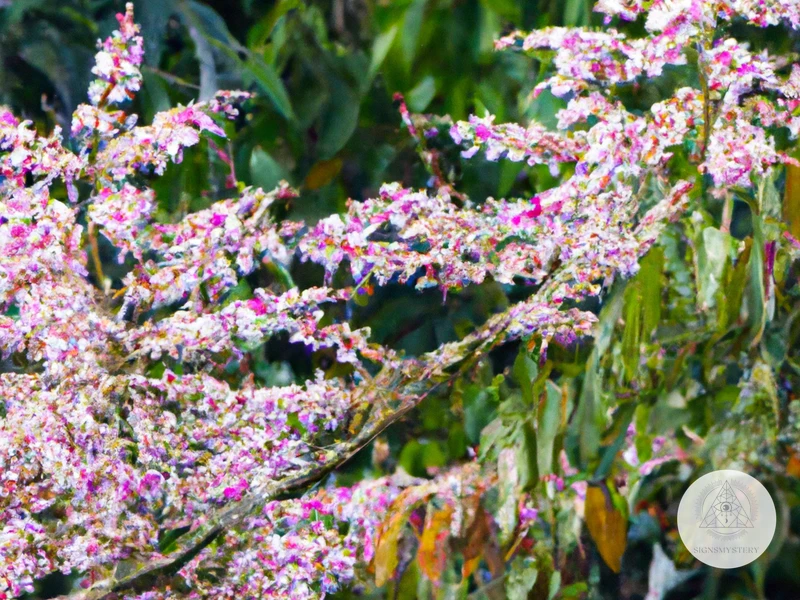
Bobinsana is a plant commonly used in Amazonian shamanic traditions. It is also known as “calliandra angustifolia” and is believed to have various medicinal properties. The plant is typically prepared as a tea or extract and is used to treat a variety of ailments, including arthritis, inflammation, and respiratory issues. It is also used as a natural remedy for depression and anxiety. Additionally, Bobinsana is commonly used in Ayahuasca ceremonies as a way to enhance the spiritual experience. While there is little scientific research available on the effects of Bobinsana, it is a respected and important part of Amazonian shamanic practices.
What is Bobinsana?
Bobinsana is a tropical plant that belongs to the family of legumes. It is commonly found in the Amazon basin and is traditionally used in shamanic medicine to treat various ailments. The plant is usually consumed in the form of a tea or a tincture made from its bark, leaves, and roots.
Bobinsana has a reputation for its healing properties, and it is believed to be effective in treating a range of conditions, including rheumatism, arthritis, uterine cancer, and skin allergies. It is also frequently used in shamanic ceremonies for spiritual and emotional healing.
According to Amazonian tradition, Bobinsana is called the “spirit plant,” as it is believed to facilitate communication with the spirit world. It is also thought to enhance empathy, promote mental clarity, and offer protection against negative energy. Its effects are said to be gentle and heart-opening, making it a popular choice for those seeking to deepen their spiritual practice.
While Bobinsana is generally considered safe, there are some potential risks to be aware of. In large doses, it can cause mild hallucinations and dizziness. It can also lower blood pressure and should be avoided by those with low blood pressure. Pregnant or nursing women should not use Bobinsana, and it is always advisable to consult a healthcare provider before incorporating any new medicinal plants into your routine.
Bobinsana is a valuable plant medicine in the world of shamanic healing. Its ability to soothe physical and emotional pain, promote spiritual growth, and offer protection against negative energy make it an essential component of many traditional shamanic practices.
How is Bobinsana Used in Shamanic Traditions?
Bobinsana is a plant that is known for its healing properties and is commonly used in Amazonian shamanic traditions. It is said that Bobinsana is used by shamans to cleanse the body and mind, as well as to enhance one’s spiritual awareness and intuition. Bobinsana is often used in the form of a tea, which is made by boiling the plant’s bark. The brew is then consumed by those participating in the shamanic ritual.
Bobinsana is also believed to aid in opening the heart chakra and is therefore considered by many to be a highly spiritual plant. It is commonly used in Ayahuasca ceremonies and is said to help balance the body’s energy, allowing the participant to better connect with their inner self and the spirits beyond. Some shamans also use Bobinsana for its pain-relieving properties, as it is believed to have anti-inflammatory effects.
Bobinsana is a highly regarded plant in Amazonian shamanic traditions, known for its abilities to promote spiritual growth and healing. Its unique properties make it a valuable tool in the hands of experienced shamans, who know how to utilize its power for the betterment of those participating in their rituals.
Native American Shamanism also utilizes various plants in their spiritual practices, each with their own unique benefits and uses.
What are the Potential Benefits and Risks of Bobinsana?
Bobinsana is one of the plant medicines used in Amazonian shamanic traditions. It is known for its wide range of potential benefits, but like any medicinal plant, it also comes with potential risks. In this section, we will explore the potential benefits and risks associated with using Bobinsana.
Potential Benefits of Bobinsana:
- Physical Healing: Bobinsana is believed to have anti-inflammatory and analgesic properties, which means it can relieve pain and inflammation. It is commonly used to treat arthritis, rheumatism, and other types of physical pain.
- Emotional Healing: Bobinsana is believed to have properties that can help heal deep emotional wounds. It is used to treat depression, anxiety, and trauma. It is also used in ceremonies focused on love and heart-opening.
- Lucid Dreaming: Bobinsana is believed to help induce and enhance lucid dreaming. It is commonly used by shamanic practitioners to gain insight and guidance in their dreams.
- Energy Booster: Bobinsana is believed to boost energy levels and increase endurance. It is often used to combat fatigue and increase physical stamina.
Potential Risks of Bobinsana:
- Allergic reactions: Some people may be allergic to Bobinsana and experience allergic reactions such as rashes, hives, and swelling.
- Interaction with other medications: Bobinsana may interact with certain medications, such as blood thinners and antidepressants. It is important to consult a healthcare professional before taking Bobinsana if you are currently taking any medications.
- Overconsumption: Overconsumption of Bobinsana can lead to side effects such as nausea, vomiting, and diarrhea.
- Weakness: Bobinsana can cause a temporary sense of weakness, which can be dangerous if the consumer needs to perform physically demanding tasks.
While Bobinsana has a host of potential benefits, it is important to be aware of the potential risks associated with its consumption, like any other medicinal plant. It is important to use caution and consult a healthcare professional before incorporating Bobinsana or any other medicinal plant into your wellness routine.
Rapé
Rapé is a type of plant medicine used in Amazonian shamanic traditions. It is made by grinding various plants into a fine powder and then blowing the powder into the nostrils. The plants used in the blend can vary, but often include tobacco, ash, and other medicinal herbs. Rapé is believed to have a variety of benefits, including grounding and centering the individual, as well as opening the airways and providing mental clarity. Some practitioners also believe that rapé can help to release negative energy and emotions, making it a useful tool for emotional and spiritual healing. However, as with any plant medicine, there are potential risks associated with the use of rapé, including potential side effects and interactions with other medications. It is important to work with a trained practitioner and to approach the use of rapé with caution and respect.
What is Rapé?
Rapé is a plant medicine that has been used for centuries in Amazonian shamanic traditions. It is also known as “hapi” or “hape” and is made from a mixture of powdered tobacco (Nicotiana rustica) and other medicinal plants, such as tree ash, seeds, leaves, and bark.
The tobacco used in rapé is not the same tobacco found in cigarettes. It is a potent and pure form of tobacco that contains high levels of nicotine. The other medicinal plants added to the mixture can vary depending on the specific shamanic tradition and intention.
Rapé is typically administered through the nostrils using a special blowpipe or through self-administration with a specialized applicator called a Kuripe. The powder is blown into each nostril, and the experience can be intense and overwhelming.
Rapé is regarded as a powerful medicine that has both physical and spiritual effects. In shamanic traditions, it is believed to clear negative energy and promote clarity, focus, and insight. It is also believed to have healing properties that can help alleviate physical ailments such as headaches, sinus congestion, and respiratory issues.
However, as with any plant medicine, there are potential risks and side effects associated with rapé. Common side effects include nausea, dizziness, and disorientation. It is also important to note that rapé should only be administered by an experienced shaman or trained practitioner to ensure proper dosage and safety.
Rapé is a potent and respected part of Amazonian shamanic traditions, used for its cleansing and transformative properties.
How is Rapé Used in Shamanic Traditions?
Rapé is a powdered tobacco that is blown into the nose, which can be described as both intense and purifying. In shamanic traditions, the use of rapé is seen as a way to bring about a deeper connection to the spiritual realm and to gain insight and clarity. The process of receiving rapé is often done in a group setting, with a shaman administering the powder.
Once the rapé is ingested, it can produce a range of physical and psychological effects, such as increased heart rate, intense visions, and a feeling of being more grounded and connected to the earth. Many practitioners of shamanic traditions believe that rapé can also help to clear negative energy and toxins from the body.
The use of rapé has been a long-standing tradition among indigenous tribes in the Amazonian region, who see it as a sacred and powerful tool for healing and spiritual growth. Today, rapé has gained popularity worldwide, and many people are drawn to its potential healing benefits and ability to enhancetrance states.
However, it is important to note that the use of rapé can have potential risks and should be approached with caution. Overuse can lead to addiction and damage to the nasal tissues. It is essential to only use rapé under the guidance of a shaman or trained practitioner with experience in administering the powder and its appropriate dosage.
Rapé can be a powerful tool for those seeking a deeper connection to spirituality and inner wisdom. Its use in shamanic traditions highlights the profound respect for the natural world and the healing potential of plant medicines.
What are the Potential Benefits and Risks of Rapé?
Rapé is believed to have a range of potential benefits for physical, emotional, and spiritual well-being. It is used in Shamanic traditions as a tool for cleansing and purging, and to enhance focus and clarity. Some of the potential benefits of Rapé may include:
- Physical Benefits: Rapé is believed to have anti-inflammatory and analgesic properties, which may help to relieve various types of pain and inflammation.
- Mental and Emotional Benefits: Rapé is used to enhance focus and clarity, improve mood, and promote a sense of calm and relaxation.
- Spiritual Benefits: Rapé is also believed to have powerful spiritual properties, which can help to deepen meditation and ritual practices, and provide a sense of connection with the divine.
Despite the potential benefits of Rapé, it is important to note that there are also risks associated with its use. Some of the potential risks of Rapé may include:
- Physical Risks: Overuse of Rapé may cause irritation and damage to the nose, throat, and lungs. It may also cause headaches, dizziness, and other physical symptoms.
- Mental and Emotional Risks: Some individuals may have negative reactions to Rapé, including anxiety, paranoia, and other mental health issues.
- Spiritual and Cultural Risks: It is important to approach the use of Rapé with respect and understanding of the cultural traditions from which it originates. Misuse or appropriation of Shamanic practices can be disrespectful and harmful to indigenous cultures.
As with all plant medicines, it is important to exercise caution and informed consent when using Rapé. It is recommended to work with an experienced practitioner who can guide you through the process and help you to understand the potential risks and benefits of its use.
Kambo
Kambo, also known as Sapo, is a powerful plant medicine used by indigenous Amazonian tribes for its healing properties. It is derived from the secretions of the giant monkey frog and is believed to have a wide range of physical and spiritual benefits. Kambo is administered via small burns made on the surface of the skin, followed by the application of the frog’s secretion. The effects of Kambo are fast-acting and intense, typically causing the recipient to experience sweating, shaking, vomiting, and diarrhea. These effects are believed to help cleanse the body of toxins and negative energy. Kambo is also used by some for its properties as an anti-inflammatory and pain reliever, and it is said to strengthen the immune system. However, there are risks associated with the use of Kambo, including the potential for allergic reactions and other adverse effects. It is important to seek out a reputable and experienced practitioner when considering the use of Kambo as a form of plant medicine.
What is Kambo?
Kambo is a natural medicine derived from the secretions of the Giant Green Monkey Tree Frog, which is native to the Amazon rainforest. The secretion is collected harmlessly from the frog, which is then released back into the wild unharmed. Kambo is a powerful substance, used traditionally by Amazonian tribes for its healing properties.
Kambo has been used for centuries to help people deal with various physical and psychological ailments. It is known to have a range of health benefits, such as boosting the immune system, detoxifying the body, reducing inflammation, alleviating pain, and treating infections.
Kambo is administered through small burns made on the skin, allowing the secretion to be absorbed directly into the bloodstream. The burns are typically made on the arm or leg and are painless, healing quickly without leaving a scar.
The effects of Kambo can be intense and immediate, often causing a warm and flushing sensation throughout the body, accompanied by a rapid heartbeat, nausea, and vomiting. These reactions are usually short-lived and are followed by a sense of clarity, peace, and rejuvenation.
Kambo is considered safe when administered by a trained and experienced practitioner. However, it is not recommended for pregnant women, people with heart conditions, or those on certain medications.
Kambo is an intriguing natural medicine with many potential health benefits. However, it should be approached with caution and used only under the guidance of a trained practitioner.
How is Kambo Used in Shamanic Traditions?
Kambo is a secretion obtained from the Giant Green Monkey Tree Frog that is used in traditional Amazonian shamanic practices. This powerful medicine is known for its potent healing properties and is used for a wide range of physical and mental ailments.
In shamanic traditions, Kambo is administered through small burns on the skin, typically on the arm or leg. The burns are made with a small stick that is heated over an open flame and then applied to the skin. Once the burns have been made, the Kambo secretion is applied to the site, where it enters the bloodstream and begins to take effect.
The experience of taking Kambo is intense and can vary from person to person. The medicine typically causes a strong physical and mental reaction, including vomiting, sweating, shaking, and increased heart rate. However, these side effects are usually short-lived, and the overall experience is believed to be highly beneficial.
In shamanic traditions, Kambo is thought to have a wide range of healing properties. Some believe that it can help to detoxify the body, boost the immune system, and even cure diseases. Others believe that it can help to improve mental clarity and focus, reduce stress and anxiety, and create a sense of spiritual awakening.
Despite its potential benefits, Kambo should only be administered by a trained and experienced shaman. The medicine can be dangerous if not used properly, and it is important to work with someone who understands the proper dosage and administration techniques.
Kambo is a powerful medicine used in traditional Amazonian shamanic practices to treat a wide range of physical and mental ailments. While the experience of taking Kambo can be intense, it is believed to have many potential benefits and is an important part of traditional shamanic healing practices.
What are the Potential Benefits and Risks of Kambo?
Kambo, also known as the “frog medicine,” is a secretion from the skin of the giant monkey frog found in the Amazon rainforest. It has been used traditionally by indigenous tribes for its potential healing properties. Here are some potential benefits and risks associated with kambo:
Potential Benefits:
- Boosts immunity: Kambo is believed to stimulate the immune system and help the body fight off illnesses and diseases.
- Relieves pain: Kambo can act as a natural painkiller and is used to alleviate chronic pain conditions such as migraines, arthritis, and back pain.
- Detoxifies the body: The secretion of kambo contains peptides that have been shown to have a detoxifying effect on the body by increasing blood flow and lymphatic drainage.
- Relieves depression and anxiety: Kambo is believed to have psychoactive properties, which may help to reduce symptoms of depression and anxiety.
- Enhances mental clarity: Kambo has been reported to enhance mental focus and concentration, making it useful for people who suffer from cognitive impairment and memory loss.
Potential Risks:
- Allergic reactions: Some people may be allergic to kambo and may experience a severe allergic reaction, including anaphylaxis.
- Physical discomfort: Kambo may cause physical discomfort such as vomiting, diarrhea, and a rash.
- Dehydration: Kambo can cause dehydration, so it is important to drink plenty of fluids before and after the ceremony.
- Cardiovascular complications: Kambo has been reported to increase heart rate and blood pressure, which may be dangerous for people with pre-existing cardiovascular conditions.
- Psychological distress: Kambo can induce intense emotional responses that may be distressing for some people, especially those with a history of trauma or mental health conditions.
It is important to note that kambo ceremonies should only be performed by experienced and trained practitioners in a safe and controlled environment. It is also important to discuss any pre-existing medical conditions or medications with the practitioner prior to the ceremony.
Conclusion
After exploring the various forms of plant medicines used in Amazonian shamanic traditions, it is important to note that while they can have potential benefits, there are also risks involved. It is crucial for individuals to do their own research and have a thorough understanding of the potential risks and benefits before deciding to partake in any of these practices. It is also important to seek guidance from experienced and reputable shamans.
Furthermore, it is important to approach these practices with a degree of respect and reverence. The indigenous cultures of the Amazon have been utilizing these plants for centuries for their medicinal and spiritual properties. It’s important to acknowledge and honor the cultural significance and traditions associated with these practices.
In conclusion, while the exploration of plant medicine can be intriguing, it is important to approach it with caution and respect. It is important for individuals to carefully consider the potential risks and benefits before deciding if it is the right path for them. By educating oneself and seeking guidance from experienced professionals, individuals can approach these practices with a greater degree of understanding and appreciation.
Frequently Asked Questions
What makes Amazonian shamanic traditions unique?
Amazonian shamanic traditions are unique in their reliance on plant medicines and their deep connection with the spirit world.
What is the purpose of plant medicines in Amazonian shamanic traditions?
Plant medicines are used in Amazonian shamanic traditions to facilitate communication with the spirit world, gain insights, and heal physical and emotional ailments.
How is ayahuasca prepared and consumed?
Ayahuasca is prepared by boiling the ayahuasca vine with specific plant leaves to create a brew. It is typically consumed in a ceremonial setting, with a shaman leading the ceremony.
What are the potential benefits of ayahuasca?
Ayahuasca has been linked to potential benefits such as improved mental health, increased creativity, and a deeper spiritual understanding.
What are the potential risks of ayahuasca?
Potential risks of ayahuasca include vomiting, diarrhea, hallucinations, and psychological distress.
What is rapé made of?
Rapé is made of ground tobacco mixed with various other plants, such as ash, seeds, and leaves.
How is rapé administered?
Rapé is administered by blowing the powdered mixture into the nose using a special pipe or applicator.
What is the purpose of kambo?
Kambo is used in Amazonian shamanic traditions as a purgative and to boost physical and mental energy.
How is kambo administered?
Kambo is administered by burning small holes into the skin and applying the kambo secretion to the wounds.
What are the potential risks of kambo?
Potential risks of kambo include vomiting, diarrhea, and a drop in blood pressure.




